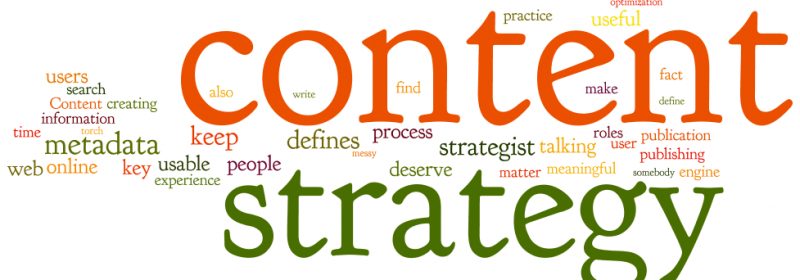The 3 keys to creating a content strategy for your blog

A lot of business owners will have experience with blogging, which is one of the finest ways to publish brand opinion and get relevant and engaging content to customers. But while it's all of that plus much more, it's important to consider that there's more to building up a successful company blog than simply writing a series of exciting articles – you need a strategy and you need to execute that strategy properly and have a plan for the future.
It's all about relevance – or more specifically, staying relevant. Today, we're going to discuss content strategy and blogging to help you get business blogging right the first time around.
1. Research, research and research some more
Your strategy is going to be built from research.
What blog posts are your competitor's creating? Which of those blog posts gets the highest response? Where do your competitor's share their blog posts? Which channels work best for them? Competitor research will answer plenty of questions, questions which are going to help you define which post formats and channels to invest in the most.
1.Visit competitor blogs;
2.Visit competitor social media pages;
3.Make a note of each successful post type;
4.Consider the resources for such posts;
5.Use Google to find format ideas.
2. Know your audience
Competitor research is essential, but so is understanding your audience.
Who are you speaking to? Why do these people visit your website? Understanding your visitors is going to help you create content that your audience won't ignore – plus, you can't simply rely on the success of your competition to get by when blogging, you're also going to need unique insight. Thankfully , there are ways to get this:
1.Use Google Analytics and Ruler Analytics to understand key data about your audience, such as location, age, which pages they spend the most time on plus much more.
2.Look through your followers on social media and create a table for average age, location, gender, and basic interests.
3.Poll your audience to find out what interests them the most about what you offer – try and discover what your audience values the most and what they don't value at all
3. Map out your content – but ensure room for relevancy
Once you have plenty of research data and audience data, you can start to map out your content production. For this, we recommend using a content calendar that's cloud-based so that you can edit to on-the-go, or if that's not your thing at the very least use Microsoft Excel to map out post ideas and publish dates and store it on Google Drive.
At this stage of creating a content strategy for your blog, you also need to leave room for relevancy – trends emerge at a moment's notice, so be sure to set up Google Alerts for certain keywords and check into Google News to see whether there's a new hot topic to cover.
1.Use software to map out your post titles and publishing dates;
2.Stay relevant by setting up keyword alerts and monitor social networks daily;
3.Take into account business operations and always make time for blogging.
